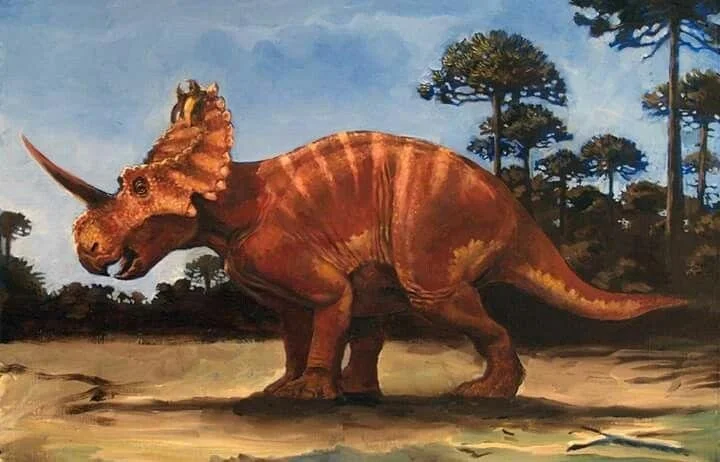Centrosaurus (Sharp-Point Lizard)
Basic facts
20 feet (6m) length
Late Cretaceous
Canada
Herbivore
Centrosaurus is a genus of dinosaur belonging to the Ceratopsidae family, which includes other well-known horned dinosaurs like Triceratops and Styracosaurus. It lived during the Late Cretaceous period, approximately 76 to 75 million years ago, in what is now North America, particularly the region that is now Alberta, Canada. The first fossils of Centrosaurus were discovered in the early 20th century, and since then, numerous findings have provided paleontologists with valuable insights into this intriguing dinosaur.
Centrosaurus was one of the most common of the ceratopsians at the end of the Cretaceous period. It´s diet was plant based as it was a herbivore. It had a well-developed frill with large holes in it. The frill was covered in skin when this dinosaur was alive. It also had a ball-and-socket joint in it´s neck, allowing it to turn it swiftly as defence measures against predators such as the Tyrannosaurus. Centrosaurus was a medium-sized ceratopsid dinosaur, measuring about 18 to 20 feet (5.5 to 6 meters) in length and weighing around 2 to 3 tons.
It was first named Monoclonius (Single Horn) - but the name was ditched later, sparking controversy afterwoods wether it was named correctly.
Its fossil bones have been discovered concentrated in a thick layer, resulting in theories of a huge flood that ended tens of thousands of these dinosaurs that were roaming in large herds. The pit, where the bones were found are located in Alberta, Canada and is named as the Centrosaurus bone bed.
